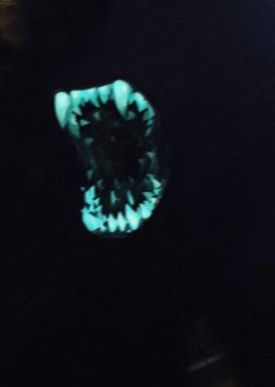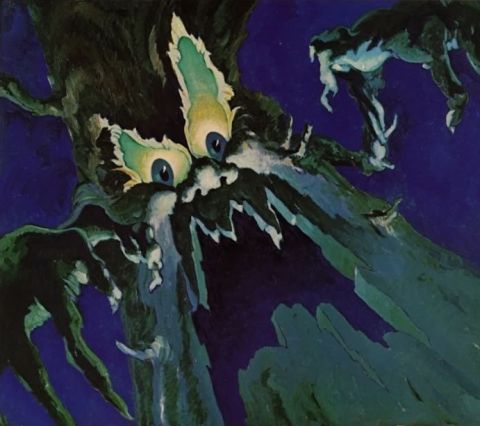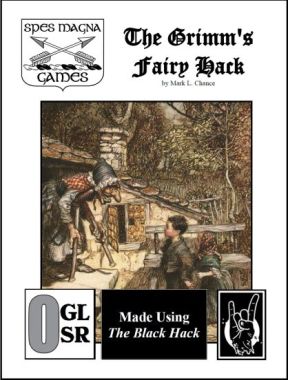The Teeth in the Darkness
First, some news: I’ve released the playtest version of The Grimm’s Fairy Hack via DriveThruRPG. It’s listed as Pay What You Want with a suggested price of $2. Of course, as a purchaser (even if you choose to purchase the game for free), you’ll automatically receive updates to TGFH, to include the final, for-sale version. In TGFH, a based on The Black Hack roleplaying game, the players take on the roles of children from our real world who find themselves lost in a dangerous, magical realm. These playtest rules include all the information you need to get started exploring your own versions of grim tales.
And now a monster inspired by an entertaining film starring Finn and half of Firestorm.

Teeth in the Darkness
Frequency: Very rare
No. Appearing: 5-30
Armor Class: 6
Move: 12″
Hit Dice: 2-5
% in Lair: 35%
Treasure Type: O, P, R
No. of Attacks: 3
Damage/Attack: 1-4/1-4/1-6
Special Attacks: Add 1/2 HD to damage rolls
Special Defenses: See below
Magic Resistance: Standard
Intelligence: Low to Average
Alignment: Neutral evil
Size: S to M (2′ to 5′ at the shoulder)
Psionic Ability: Nil
Attack/Defense Modes: Nil
Level/X.P. Value: 60+2/hp (2 HD); 110+3/hp (3 HD); 185+4/hp (4 HD); 290+5/hp (5 HD)
Found in caverns and ancient forests, the teeth in the darkness are intelligent predators that run in packs, hunting much like wolves. These creatures lope about most of the time on all fours, and they are skilled climbers but do not swim well. Their forelegs are longer than their rear legs, giving them an appearance somewhat like an gorilla. The teeth in the darkness have no eyes (and are consequently immune to attacks and illusions that affect the sense of sight). They have highly developed olfactory senses as well a form of echolocation that uses clicks, grunts, snarls, and surprisingly human-like screams; some of the teeth in the darkness’s vocalizations cannot be detected by normal hearing. The teeth in the darkness use these same sounds to communicate with each other. Due to their unusual senses, the teeth in the darkness are surprised only a on 1 (in 6), and they track prey by scent like a bloodhound.
In the dimly lit and shadowy conditions, these monsters are almost impossible to see as long as they keep their mouths closed to conceal their bioluminescent fangs. They move silently with cunning. In the dark when they cannot be seen, they surprise foes 5 in 6 times. Even in lighted conditions, they still surprise foes 3 in 6 times due to their stealth. The size of these monsters (and HD) varies with age and sex. Males are generally larger when fully grown. Regardless of size, they are quite strong. Add one-half the monster’s HD (round up) to damage rolls with its bear-like claws and glowing fangs. Their fur is blacker than black, and it does not reflect light. This makes it difficult to accurately judge their position at distances farther than 15 feet, especially when they are moving; this trait imposes a -4 penalty on “to-hit” rolls with ranged attacks.



